Why Travel Planning Matters for AP Exams
It’s easy to think the hard work for an AP exam ends with practice tests and review packets. But for many families, the day-of logistics — getting your child to the right test center, on time, and in the right headspace — can make or break the exam experience.
AP exams are high-stakes moments: years of coursework and hours of studying come down to a few sections in a single morning or afternoon. A missed bus, an unfamiliar building, or a chaotic arrival can amplify stress and waste precious mental energy. As a parent, your role in minimizing that friction is one of the most powerful supports you can give.
What This Guide Will Give You
- Step-by-step booking and travel checklist for AP test centers
- How to build time buffers and contingency plans
- Smart packing and check-in pointers (digital exams included)
- Real-world examples and a crash-proof timeline you can adapt
- How personalized help — like Sparkl’s tailored tutoring and logistical guidance — can fit naturally into your plan
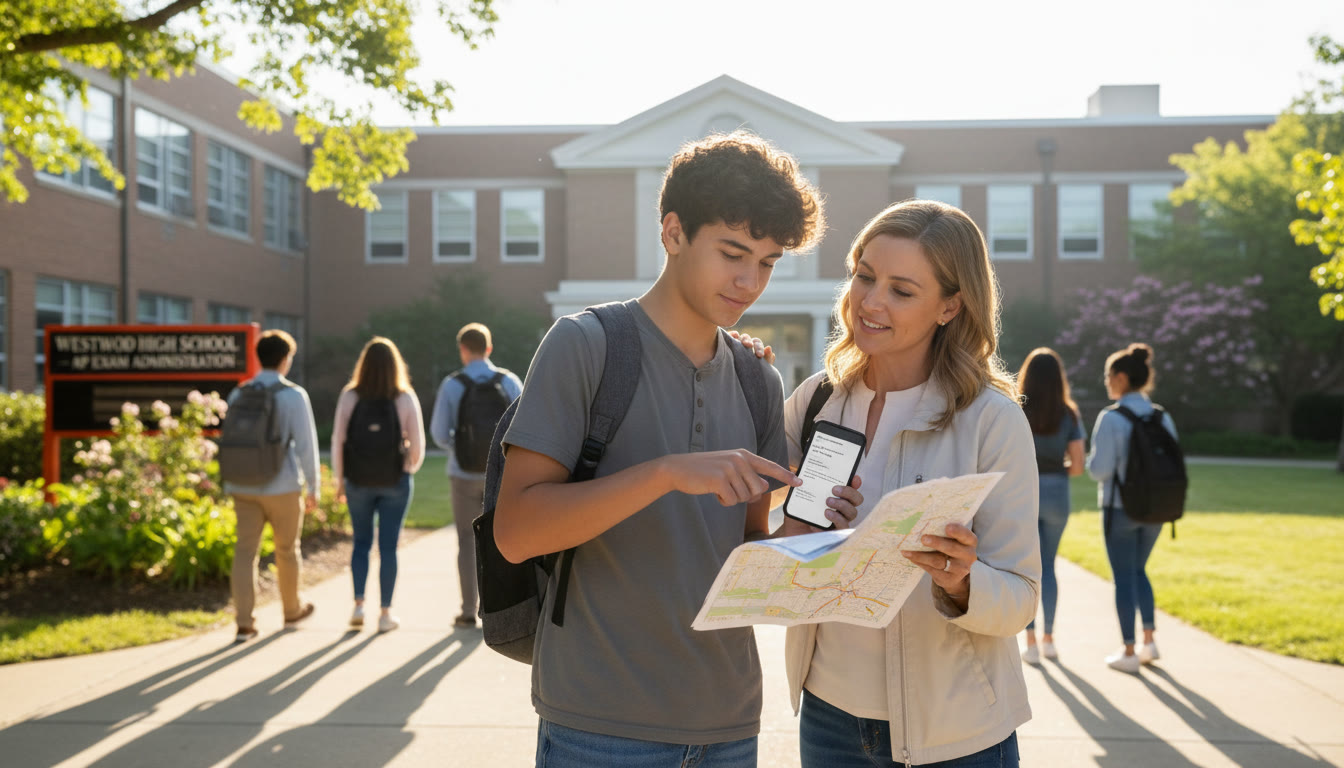
Start Early: Finding and Booking the Right Test Center
Step one is deceptively simple: know exactly where your student will take the AP exam. Many students take exams at their own high school, but it’s common for districts to host tests at a central location or for students to be assigned to a nearby school or community testing center.
Here’s a quick plan for booking and confirming your spot:
- Confirm the assigned test site with the school — Some schools post lists or send emails weeks before May. Don’t rely only on memory; get the site and room number in writing.
- Check College Board communications — The student’s College Board account will list test registrations and may include exam format (digital vs. paper) which affects what to bring.
- If your child is testing away from their home school, confirm ID and check-in rules — Many centers require government or school IDs for students who don’t attend that school.
Why test-center type matters
There are subtle differences between testing at your own high school, a neighboring school, or a district hub. The proctoring process, check-in flow, and available parking can vary widely. For digital exams, labs and Wi-Fi setup may affect how long check-in takes — and that should shape the time you plan to arrive.
Build Your Buffer: How Much Extra Time Is Enough?
The golden rule is to never time your arrival to the minute. Aim for buffers — layers of extra time — so you can absorb disruptions. Here’s a practical approach you can adapt:
- Base buffer (must-have): 30 minutes before your student’s scheduled check-in time. This gives time for parking, walking, restroom visits, and a calm moment to breathe. For digital exams, Bluebook check-in can take longer, so err on the generous side.
- Traffic or transit buffer: add 20–60 minutes depending on commute uncertainty. Urban commuters should add more; suburban families can often add less.
- Parking and shuttle buffer: 10–20 minutes if the parking lot is frequently full or if a shuttle drops students at a distance.
- Contingency window: 30–60 minutes for unforeseen events (car trouble, a missed bus, or a sudden road closure).
So a conservative total buffer might be 90–120 minutes for longer or uncertain commutes, and at least 45–60 minutes for local, predictable trips. For example: if an exam check-in starts at 8:00 a.m., plan to leave home so you arrive no later than 7:15–7:30 a.m. for most scenarios.
Sample Buffer Timeline
| Item | Time |
|---|---|
| Exam check-in begins | 8:00 a.m. |
| Aim to arrive by (Base buffer) | 7:30 a.m. |
| Allow for traffic/transit uncertainties | +30 min (target arrival 7:00 a.m.) |
| Contingency for major delays | +30–60 min (leave by 6:00–6:30 a.m.) |
Choose Your Mode: Drive, Ride-Share, or Public Transit?
Each transport option carries trade-offs. Think about reliability, cost, and seat-of-the-pants stress.
- Driving — Best for control: you choose departure time and route. Downsides: parking scarcity, last-mile walking distance, and potential for car trouble. Pack jumper cables and a charged phone just in case.
- Ride-Share / Taxi — Eliminates parking stress but introduces dependence on driver availability and surge pricing. Keep an eye on ETA and have a backup plan if a driver cancels.
- School or Public Transit — Great for economy and predictability if schedules are reliable. But bus delays or transfers can be less forgiving; add extra buffer time.
Helpful tip: drive the route at least once before exam week during the same time of day to gauge traffic and parking. Nothing beats a real-world rehearsal.
Digital AP Exams: Special Travel and Tech Considerations
More AP exams are partially or fully digital now, and that changes travel needs. If the test center provides devices, you may be spared heavy tech prep — but you cannot assume every center has identical setups.
- Check whether your school provides a device or whether your student must bring their own. If they bring a device, make sure Bluebook is installed and the device is fully charged.
- Bring charging gear — power adapters, a fully charged power bank, and extra cables. Many centers allow power banks but require them on the desk for inspection before the test.
- Know Bluebook login details — students must sign in with College Board credentials. Saving passwords isn’t always allowed; practice signing in ahead of time.
- Plan for Wi‑Fi at arrival and departure — a reliable connection is needed at the start and end of the exam. While momentary drops are tolerated, a complete outage can be stressful; choose a site with known internet reliability if you have a choice.
Pack a “Digital Exam Kit”
- Charged device and charger
- External keyboard (if required or recommended for tablets)
- Backup power bank (fully charged)
- Printed copy of login info stored securely
- Approved calculators and spare batteries if the exam allows calculators
What to Pack for Any AP Exam
Every detail helps. Create a standardized checklist and make two copies: one for the night before and one in your car.
- Approved photo ID or school ID (if required)
- Admission ticket or printed confirmation if available
- Two No. 2 pencils and erasers (for hybrid or paper exams)
- Pens with black or dark blue ink (for sections that allow)
- Approved calculators and extra batteries
- Watch (non-smartwatch) to track time if permitted
- Comfortable layers of clothing — testing rooms vary in temperature
Don’t forget small comforts that don’t violate exam rules: a sweater, a hair tie, and some cash for post-test treats. Food and drinks are typically not allowed in the exam room, but a snack during the official break is often okay with proctor permission.
Check-In and Arrival: Micro-Routines to Lower Stress
Routines reduce cognitive load. The morning of the exam, rehearse a short, calming sequence your student can use:
- Check ID and admission ticket while still in the car.
- Use the restroom before checking in (lines at schools can be unexpectedly long).
- Do a quick tech check if needed (device charged, headphones tucked away because they’re prohibited, keyboard functioning).
- Encourage a 2–3 minute breathing or grounding exercise before entering the building — even deep breaths in the car will help.
Proctor Checkpoints and What to Expect
Proctors will collect prohibited items, confirm identity if necessary, and run Bluebook or paper check-in. This process typically takes less than 10 minutes for each student, but if many students are present or if there are technical hiccups, it can take longer. Having your student arrive early keeps the mood calm and gives the proctor room to troubleshoot without rushing anyone.
Contingency Planning: If Something Goes Wrong
Despite the best planning, problems can happen. What matters is how quickly and calmly you respond. Here’s a decision tree to keep in your pocket:
- Car trouble: Call for help early, then contact the test coordinator or proctor to explain the delay. Many centers will document late arrivals and handle issues case-by-case.
- Missed bus or canceled ride: Call a ride-share while the student waits in a safe, visible spot. Use your buffer plan so the ride-share’s ETA still gets them to the center on time.
- Traffic jam: Communicate with the proctor by phone if possible and safe — many schools have a main office number you can call to let them know. They will advise whether to still come (some late arrivals may be admitted at the proctor’s discretion).
- Tech failure for digital exams: Tell the proctor immediately; they have protocols. Keep a charged phone on hand to share information with the testing site or College Board if asked.
Important: If an arrival delay is unavoidable, document everything — photos of the scene, timestamps, and records of communications. That documentation can help if you need to appeal or explain a missed exam to the school or the College Board.
Real-World Example: Two Families, Two Outcomes
Case A: The Prepared Commute. Emma’s family drove the route a week before the exam, discovered limited parking, and scouted a drop-off zone. On exam day they left 90 minutes early, arrived calm, and Emma used the extra time to do a light review and breathing exercises. Result: a relaxed check-in and a strong performance.
Case B: The Surprising Delay. Marcus planned to take a local bus and boarded on time, but a mechanical problem delayed the route by 45 minutes. Without a buffer or alternate plan, Marcus arrived flustered and missed the start window — his score was in jeopardy and the family spent weeks coordinating a make-up with the school. Lesson: transit can be unpredictable; add larger buffers or secondary options.
How Parents Can Support Without Hovering
Balance is key. Your presence is reassuring, but over-managing can increase your student’s anxiety. Here’s how to be supportive and empowering:
- Be the logistician, not the test-taker. Handle confirmations, route checks, and tech rehearsals ahead of time so your student can focus on content and mindset.
- Practice independence. Let your child manage their pack list and device prep the night before while you supervise from a distance.
- Offer a calm transport option. Whether you drive or organize a carpools, the goal is a steady presence that your student can rely on without feeling micromanaged.
- Rehearse coping strategies. Remind them of a 30-second breathing technique or a simple mantra to use in the hallway if nerves spike.
When Extra Help Makes Sense: Sparkl’s Role
For many families, logistics and study preparation go hand in hand. Sparkl’s personalized tutoring can help in two complementary ways:
- Academic confidence: One-on-one tutoring and tailored study plans reduce last-minute panic. When students feel prepared academically, travel stress has a smaller psychological impact.
- Practical readiness: Sparkl tutors often run through test-day procedures in sessions, including tech checks for digital exams and rehearsal of arrival routines, so students know what to expect. AI-driven insights can flag areas that need quick review right before the test, and tutors can suggest an efficient, calming pre-exam checklist.
Used selectively, logistical coaching paired with targeted tutoring is a powerful combination: it reduces both the cognitive load and the physical friction that can derail exam-day performance.
Checklists You Can Print Tonight
Cut these into a simple two-column list and tape them to the fridge or put them in a backpack.
| Night-Before Checklist | Morning-Of Checklist |
|---|---|
|
|
After the Exam: Debrief and Rewards
How you debrief after the exam sets the tone for future tests. Avoid turning the ride home into a forensic analysis of every question. Instead, try this sequence:
- Celebrate completion: A small treat or family lunch helps shift the focus away from stress.
- Short reflection: Ask what went well and one small area to note for next time — keep it pragmatic, not critical.
- Delay score focus: Scores can take weeks to post; use the time to regroup and prepare for whatever comes next, whether that’s another AP exam or regular classes.
Final Notes: Calm Preparation Wins
Logistics aren’t glamorous, but they’re quiet confidence builders. When a student knows where they’re going, how they’ll get there, and what to expect when they arrive, they have the mental space to do what matters most: think clearly and show what they know.
As a parent, your planning — the route rehearsals, the buffer math, the checklists, the calming presence — is an enormous gift. Combine that with targeted academic support, whether from a school resource, trusted tutor, or tailored services like Sparkl that offer one-on-one guidance, and you’ve created a reliable blueprint for success.
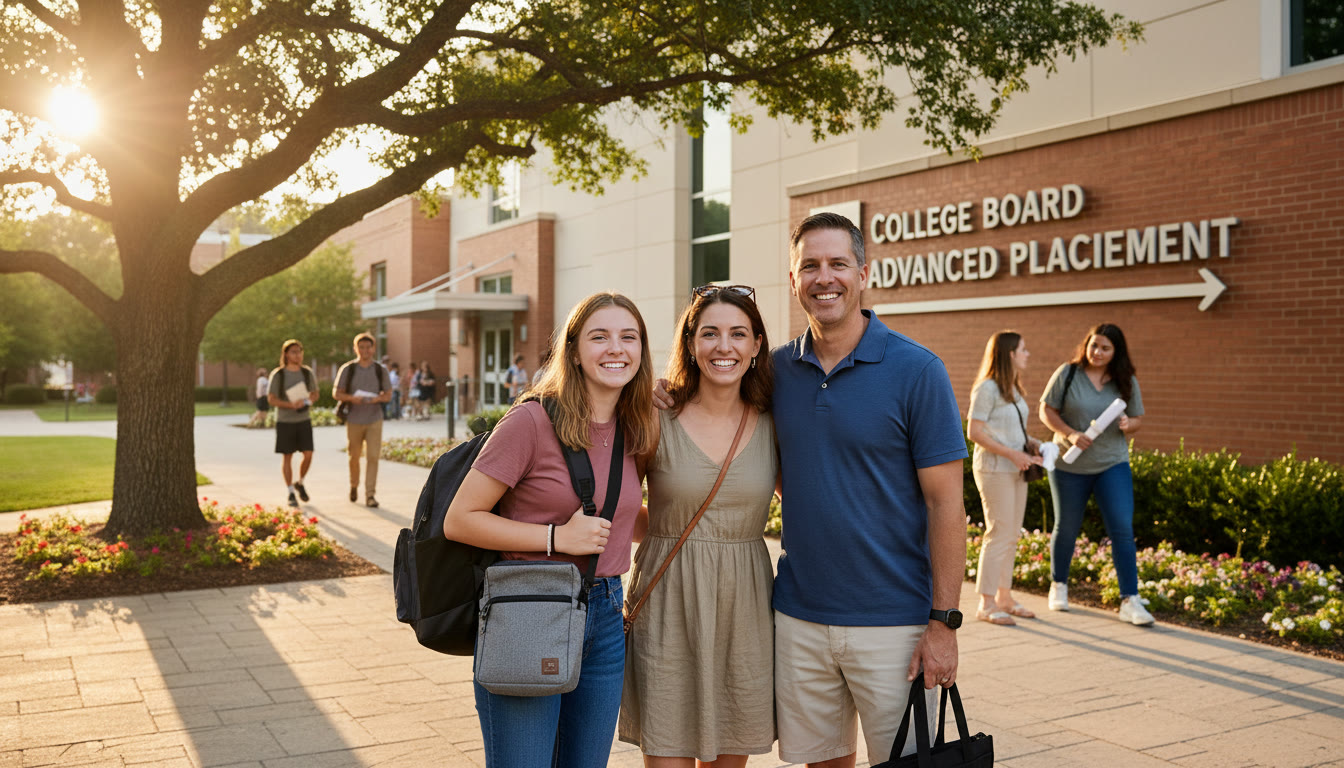
Traveling to the test center is part logistics and part psychology. Plan early, build generous buffers, rehearse the route, prepare the tech, and keep the focus on calm. With a few small rituals and a solid back-up plan, AP exam day becomes less about panic and more about performance.
Ready to make a personalized plan for your student — one that blends targeted tutoring with practical test‑day rehearsals? Sparkl’s tailored approach can help you design both the study schedule and the game‑day logistics so your student arrives prepared and poised.
Go steady, give them space, and trust the preparation. You’ve got this — and so does your student.



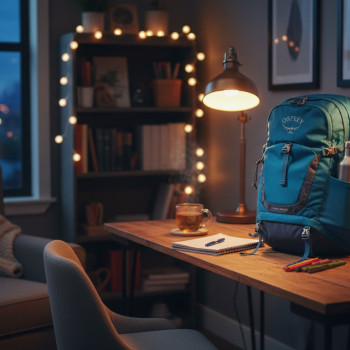



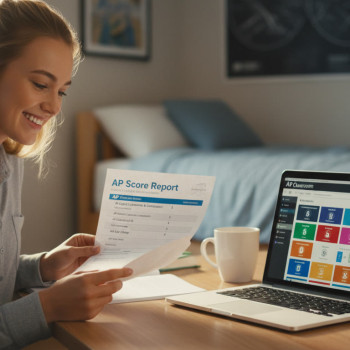

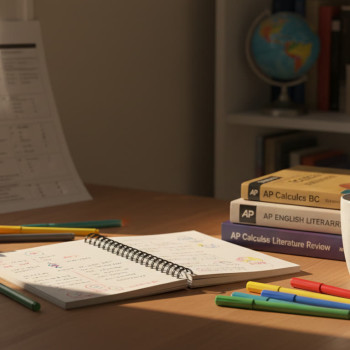
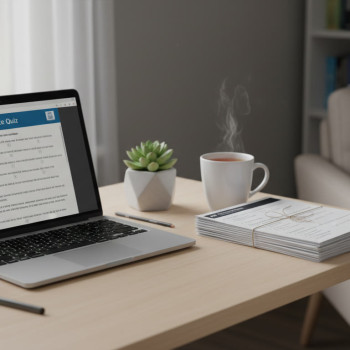









No Comments
Leave a comment Cancel